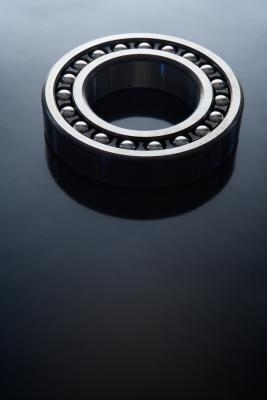
The wheel bearings on the Ford Ranger endure a lot of stress, weight and heat due to friction. Whenever the vehicle moves, the roller wheel bearings must rotate within the hub, riding smoothly over their races. This allows the wheels to spin effortlessly for however long the lubrication lasts inside the bearing assembly. With age and wear, the bearings eventually fail to rotate the wheel effectively, which leads to tire wear and suspension problems. Bearing packs can temporarily solve wheel bearing issues, but there comes a time when the races and bearings must be replaced as a unit.
Set the transmission selector in park or neutral, depending upon your vehicle. Apply the emergency brake. Use a tire iron to break the lug nuts loose on both front wheels, but do not remove the lug nuts. Lift the front of the vehicle with a floor jack and place a jack stand under each part of the frame near each wheel. Finish removing the wheels with the tire iron and set the wheels aside.
Use a socket and wrench to remove the two long caliper bolts. Disconnect the ABS wire on the top of the caliper, if equipped with one. Slip the caliper off the rotor and tie it to the frame with a bungee cord to support its weight. Use a socket to remove the two bolts that hold the caliper frame. Take the caliper frame off. Use channel locks to remove the dust cover cap on the hub.
Use wire cutters to cut the end of the cotter pin holding the castellated nut on the spindle. Unscrew the castellated nut with the channel locks and pull the spacer and outer bearing out of its seat. Pull the hub and rotor off the spindle. Place the rotor face up over two wood blocks spaced evenly apart. Place a drift punch down through the center of the hub onto the edge of the inner grease seal and tap it out with a hammer. Remove the inner bearing underneath with your hand.
Place the drift punch in the same position, but on the edge of the inner bearing race inside the hub. Tap the inner race out with the hammer. Flip the rotor over onto the blocks and place the drift punch on the lip of the small outer bearing. Tap in out with the hammer. Clean the inside of the hub with carburetor cleaner and a rag, removing all sludge. Set the rotor on the wood blocks, with the inner bearing surface facing upwards.
Place the new inner bearing race in the hub and gently tap in down into its seat with the punch, striking it in a circular fashion until it seats flush. Flip the rotor over and seat the new outer race into the hub the same way, tapping it gently down into its seat with the hammer and punch. Flip the rotor again, so the inner bearing surface faces up.
Take a palmful of bearing grease in one hand, and grasp a new inner bearing in the other hand, and shove the grease into the seams of the bearing, filling all the rollers. Grease the outer bearing in the same manner and set it aside. Dab grease on the inner race. Place the inner bearing inside the race. Set a new grease seal over the hub lip and tap in down with a hammer so it sits flush.
Align the rotor over the spindle and push it back until it seats against the axle assembly. Tilt the rotor from side to side while you push the outer bearing back into its seat inside the hub. Place the washer over it. Screw on the castellated nut by hand. Tighten the castellated nut with the channel locks, but align the cotter pin hole with the nut and spindle. The castellated nut should be snug only -- not overly tightened.
Push a new cotter pin through the castellated nut and flare the ends with wire cutters. Tap the dust cover on the hub with the hammer. Place the caliper frame over the rotor and install the bolts. Tighten the bolts with a socket. Unhook the bungee cord and slip the caliper over the rotor and align it with the caliper frame. Install the two long caliper bolts and tighten them with a socket. Reconnect the ABS wire, if you have removed one.
Repeat the same procedure on the opposite wheel. After finishing the bearing replacement, place the wheels back on the hubs and screw them on with a tire iron, only snug-tight. Use the floor jack to remove the jack stands. Refer to your owner's manual for the correct foot-pounds of torque required for your vehicle. Use a torque wrench to tighten the wheels.